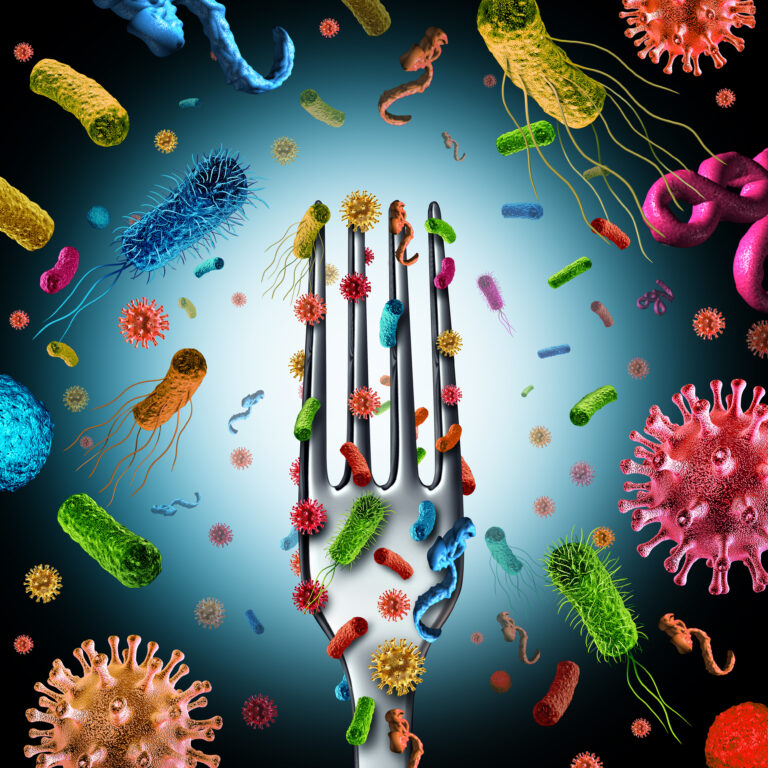There has been a lot of media, social media – and, yes, TAG – coverage of the state and federal focus on chemical risks in food. But is that really where the regulatory priority should lie? Should we be chasing parts per trillion of PFAS in food or food packaging when incidences of Campylobacter, Cyclospora, STEC, Vibrio, and Yersinia infections transmitted through food have increased since 2016? When the overall rates of Campylobacter, Listeria, Salmonella, and STEC infections remain higher than the Healthy People 2030 targets, with little indication of decreasing?
This data, released in the July CDC Foodborne Diseases Active Surveillance Network (FoodNet) report, compares preliminary 2023 statistics with those of 2016-18, the baseline used for tracking progress toward the federal disease reduction goals. While the increased use of culture-independent diagnostic tests (CIDTs) could be having some impact on the increase in detection, that does not negate the number of cases which continue to be of concern. (For more information on the CIDT impact, see TAG’s public health article on the FoodNet data.)
With a total of 29,607 cases of pathogenic infections transmitted through food in 2023 in the FoodNet surveillance area, the report provides comparisons between the preliminary 2023 and 2016-18 data based on cases per 100,000 persons:
| Cases per 100,000 persons | ||
| Pathogen | 2023 | 2016-18 |
| Campylobacter | 23.4 | 18.2 |
| Salmonella | 16.6 | 16.9 |
| STEC | 6.6 | 4.7 |
| Shigella | 6.2 | 4.8 |
| Yersinia | 2.8 | 0.8 |
| Vibrio | 1.1 | 0.7 |
| Listeria | 0.3 | 0.3 |
| Cyclospora | 1.0 | 0.3 |
From these, there were 7,234 hospitalizations and 177 deaths. In 2023, FoodNet expanded its catchment area (from Connecticut, Georgia, Maryland, Minnesota, New Mexico, Oregon, Tennessee, 3 California counties, 7 Colorado counties, and 34 New York counties to include the rest of Colorado) resulting in the reporting of even more cases: 31,492 infections, 7,588 hospitalizations, and 184 deaths in the expanded catchment area.
The fact that the incidences related to pathogenic infections have not decreased in nearly two decades, and some have even increased, should be seen as indicating a critical need for improvement by both the industry and regulatory bodies. As the first sentence of the report states: “Reducing foodborne disease incidence is a public health priority.” In full agreement with this, TAG feels that there has been some diversion from the risks of microbial contamination due to the current focus on chasing questionable chemical limits which are, in many cases, below concentrations able to be measured with current methodologies and instrumentation and certainly of questionable public health significance compared with microbiological hazards.
It is interesting to note that during the same time period covered in the FoodNet report (comparing 2023 with 2026-18) where little to no improvement has been made in so many areas of microbiological food safety, the EPA has reduced its “safe” level advisory for PFAS in water from a 2016 level of 70 parts per trillion (ppt) to the near-zero limits of 0.004 ppt for PFOA and 0.02 ppt for PFOS. As we asked in a previous article, what changed so dramatically since 2016 to warrant EPA’s assessment of “safe” levels in water taking a 17,500-fold reduction? What has changed to support the reduction of the two PFAS to levels below that which can barely be detected, let alone achieved?
We know that the FDA has historically been underfunded, particularly in relation to the foods side of its oversight, as evidenced by the infant formula crisis which spurred much of the call for improvement, including the recent OIG report and agency reorganization. We do understand that chemicals and heavy metals can be an issue under certain circumstances, but we don’t want to pay so much attention to those that we are taking our eyes off the ball on microbes. And if the FoodNet results are any indication, we are.
While food facilities do need to pay attention to, and comply with, federal and state chemical and heavy metal limits, it does not mean that you need to let this divert your attention from microbiological hazards and risks. Maintaining a thorough food safety program means going beyond regulation. So, ensuring that your program prioritizes public health by reducing foodborne disease incidence not only helps protect your customers and your brand, it could help the industry reach the Healthy People 2030 targets – which is good for everyone.
If you need assistance analyzing your food safety programs or mitigating risk, give us a call. TAG’s expert food safety consultants can help.
All content in TAG articles, newsletters and webpages are developed and written by TAG experts, not AI. We focus on the realities and the science to bring you the most current, exacting information possible.





